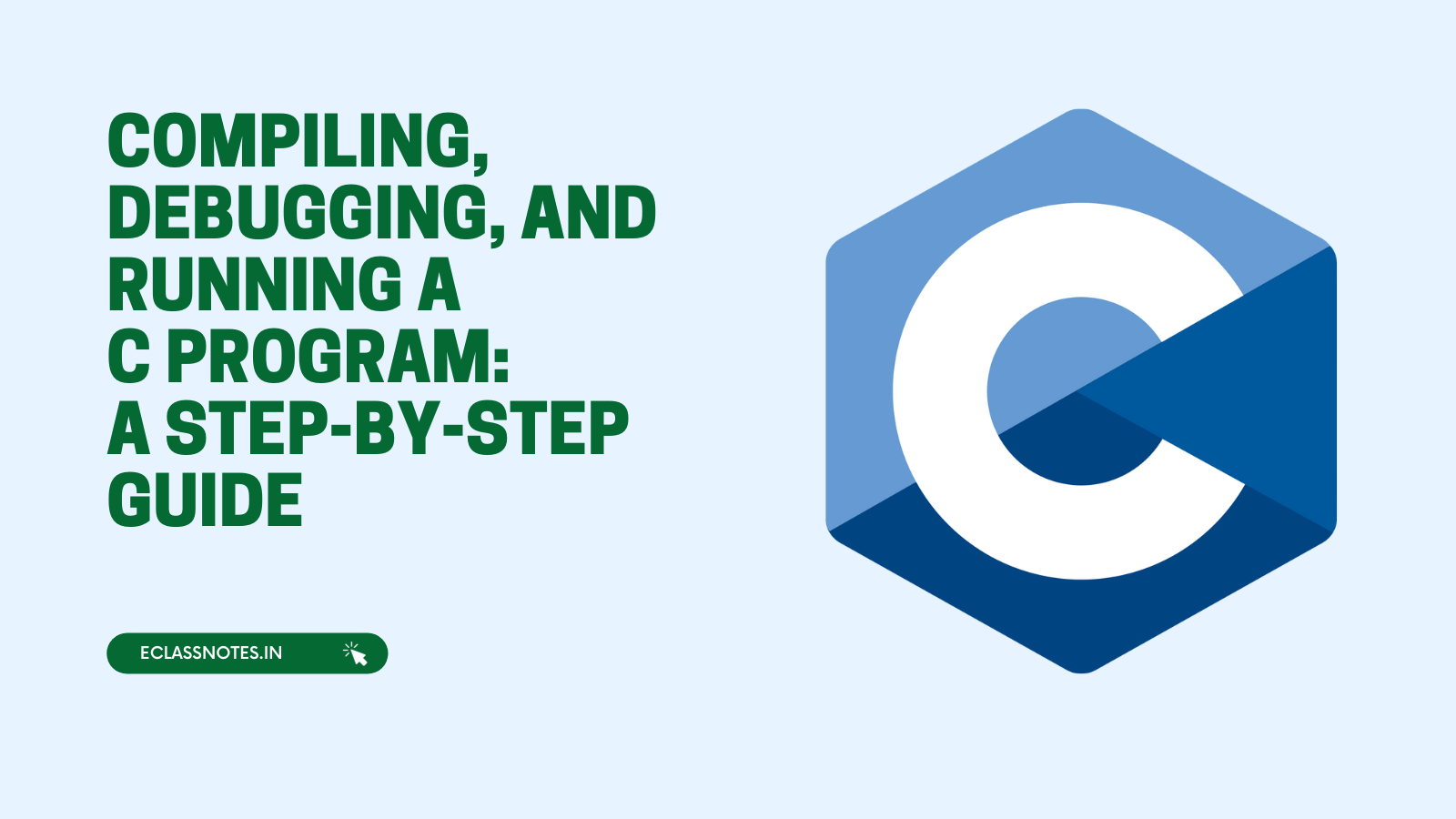C programming is at the heart of software development, known for its efficiency and versatility. To harness the power of C, developers need to master the process of compiling, debugging, and running C programs. In this article, we’ll take you through the essential steps to create and execute a C program successfully.
Step 1: Writing the C Code
The journey begins with writing the C code. You can use a plain text editor or integrated development environments (IDEs) like Visual Studio Code, Dev-C++, or Code::Blocks, which offer features like code highlighting and auto-completion.
#include <stdio.h>
int main() {
printf("Hello, World!\n");
return 0;
}In this simple example, we have a basic “Hello, World!” program. It includes the stdio.h header for input and output functions defines the main function (the entry point of the program) and uses printf to display a message.
Step 2: Saving the C File
Save the C code in a file with the .c extension. Name it something meaningful, like hello.c, to keep your code organized.
Step 3: Compiling the C Code
Compilation is the process of translating human-readable C code into machine-executable instructions. To compile your C program, open your command-line interface (e.g., Command Prompt on Windows, Terminal on macOS or Linux), navigate to the directory containing your C file, and use the following command:
gcc hello.c -o hello- gcc is the GNU Compiler Collection, commonly used for compiling C programs.
- hello.c is the name of your source code file.
- -o hello specifies the output file name. In this case, it’s named hello (you can choose a different name).
- Upon successful compilation, you should see an executable file (hello in this case) in the same directory.
Step 4: Debugging the C Program
Debugging is crucial for identifying and fixing errors in your code. Most integrated development environments offer built-in debugging tools. Alternatively, you can use the GNU Debugger (GDB) on the command line. To use GDB:
1. Run GDB with your compiled program:
gdb ./hello2. Start debugging by typing run and pressing Enter.
(gdb) run3. If your program encounters an issue, GDB will provide information about the error and its location in your code.
4. Use commands like list, break, continue, and print to navigate and inspect your program during debugging.
5. When you’ve identified the issue, modify your code and recompile it. Repeat the debugging process until your program runs without errors.
Step 5: Running the C Program
After successfully compiling and debugging your C program, it’s time to run it. In the command line, simply type the name of the executable (without the .exe extension on Windows) and press Enter:
./helloIf everything is in order, you should see the output of your program:
Hello, World!Congratulations! You’ve compiled, debugged, and run your first C program. As you gain more experience with C programming, you’ll explore more complex programs and utilize more advanced debugging techniques. The skills you’ve learned in this guide are foundational and will serve you well as you continue your programming journey in the C language.
